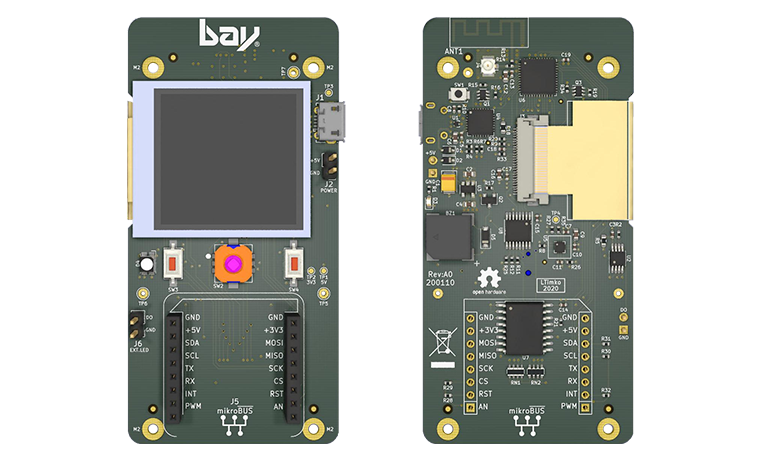Programming robots is fun – but unfortunately it is not available for many students. An easy-to use tool is being developed in the Bay Zoltan Research Centre, which can be easily applied in the IT education and will effectively support it. And hopefully it will be affordable for every school in the country.
The aim of the tool is to help students to write programs for other instruments than their computers. These programmed small units may enable playing songs, controlling the light or the heating of the aquarium or controlling small robots. In brief, result of programming can be tangible and more exciting.
BayBit is a very capable hardware board, which can be programmed easily. Scratch language, which was developed for kids, can be used for this tool.
Researchers of the Bay Zoltan Research Centre were inspired by the Micro:Bit device, which was supported by BBC. We wanted to create a similar device, with all design provided in open source-code and all documents, tutorials and examples available in Hungarian.
The target groups of BayBit are small kids and beginners. It can be programmed on different programming languages, which will enable starting with simple languages and continuing with the more complex ones. It has a strong hardware. Developers aimed to keep its price low to be easily available for schools or students.
Development of BayBit was supported by SciShops project, financed by Horizon 2020 programme.

Technical details:
The BayBit IT education system is composed of a small hardware board and a computer with the development environment. The BayBit hardware is built around the high performance 32-bit ESP32 type microcontroller, running at 240MHz and equipped with the popular wireless communication interfaces like Wi-Fi or Bluetooth.
The board contains several peripheral components. The user interface is provided by a colorful 128×128 LCD display with an optional touch interface, a four-direction joystick button, two pushbuttons, a RBG LED and a speaker. The board has built in motion sensor which is composed of a three axes acceleration and three axis Earth magnetic field sensor. If more sensors or actuator would be needed the board can be expanded with the microBUS compatible expansion board, which provides hundreds of expansion possibilities from sensors, actuators to the various communication modules.
The programs created by the users can be downloaded to the board via the USB connection and the system supports many programming languages. The kids might start learning the BayBit using MakeCode or Blocky programming environment. These programming tools are very intuitive and easy to use especially for kids who has no previous programming experience, since their first programs can be created in a graphical environment visually connecting program parts like a puzzle. The advantage of these programming languages is the very short learning curve and the short development time of the first operational application.
After the first success and gaining some experience in software development the users can switch to more advanced and capable languages like Python or even to C where all capabilities of the board, the power of the CPU can be utilized.

